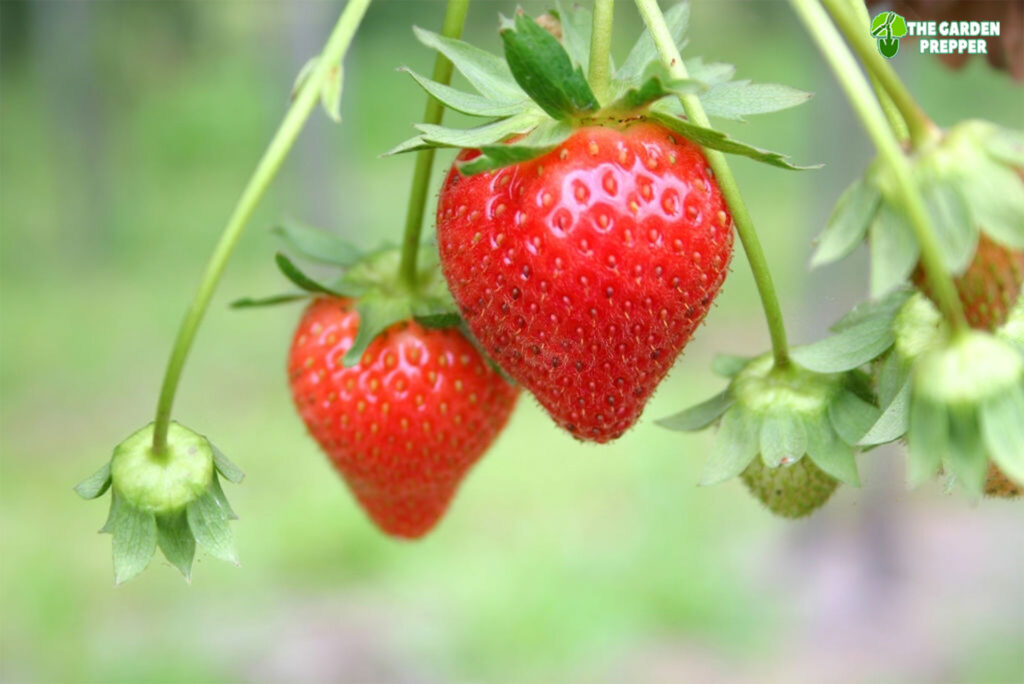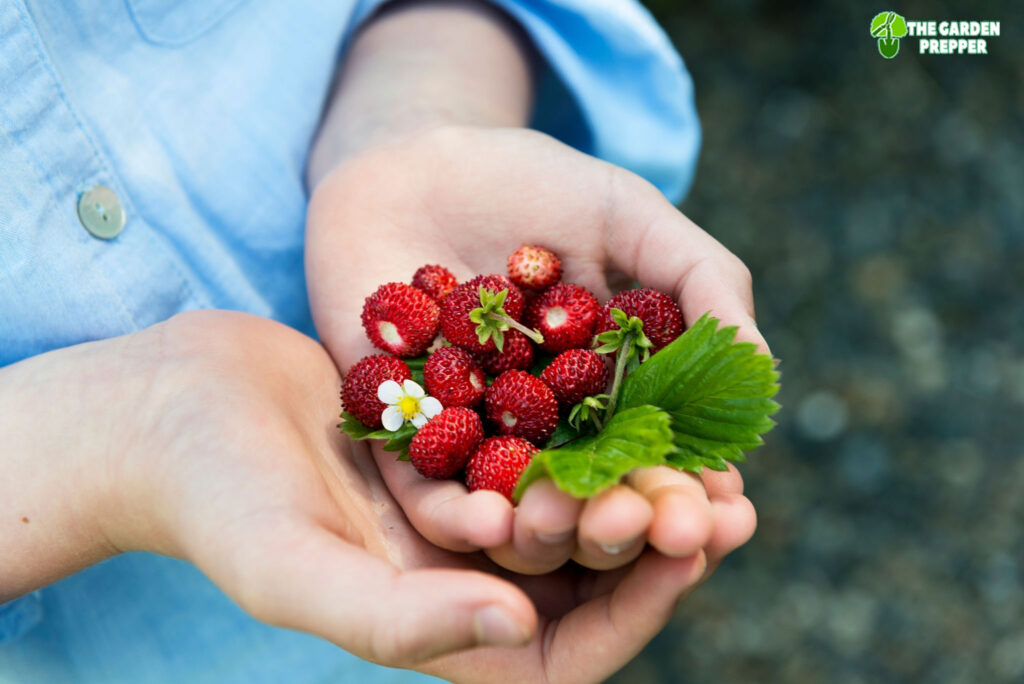If you’re all about gardening, you might once ask yourself, “Do strawberries need full sun to grow?” The short answer is: Yes, and no!
Strawberries require at least 8 hours under the sun per day. But that’s not the only way to go. There are more criteria to have the best strawberries harvest.
What about growing strawberries without the full-sun condition? Don’t worry, we will provide you with all the necessary steps and tips for a successful strawberry crop.

How Much Sun Do Strawberries Need?
As mentioned above, most cultivated strawberries do love sunlight. They need a full sun of at least 8 to 10 hours per day to develop fully.
However, different types of strawberries can survive under different types of climate, whether it’s super sunny and scorching or shady and dry. Of course, these factors affect the final crop’s quality.
The Correlation Between Strawberries And Sun
Strawberries bear fruits and develop in such a short period: only from 20 to 40 days after the implantation. Additionally, their root system isn’t deep-seated as the stolons are their primary nutrients’ transporters. Therefore, light and water play a significant role in creating high-quality fruits.
When it comes to light, we all know that there are two main parts: Light intensity and temperature changes.
- The light intensity can highly impact the photosynthesis process, the growth, and functions of strawberries’ parts. Scientifically, an increase in light intensity draws higher productivity and better fruit quality, especially in cultivated strawberries.
- A temperature change could quickly affect the frequency of body reconstruction, developing period, and strawberries’ life cycle. Most studies show that mainstream varieties of strawberries tend to grow faster under the favorable warm temperature. Their life cycle and the fruit-bearing period seem to be fastened.
If a strawberry crop doesn’t receive full sun and suitable temperature, it will grow slower and produce low-quality fruits. Higher chances are the strawberries evolve in their body’s changes as well. These changes might be deeper roots, slimmer stolons, small fruits, etc.
All in all, strawberries don’t require sunlight to survive, yet they need an adequate amount of sun to grow best.
Read more: When to Plant Strawberries in Ohio
How To Grow Strawberries Without Full Sun
1. Select The Suitable Variety Of Strawberries
As stated above, the reproduction process of mainstream strawberries calls for at least 8 hours of sunlight.
Therefore, if you have a shaded garden, you might want to avoid typical varieties of strawberries, which we are being used to. Rather than that, what you need are those who can live and grow without that much light – wild strawberries.
Mainstream strawberries Vs. Wild strawberries: Primary Differences
Mainstream strawberries are a combination of Fragaria and Ananassa subfamilies. These hybrid varieties usually provide bigger fruits compared to wild ones. Thus, they are the favorite selection of most gardeners.
On the other hand, wild strawberries are the varieties of strawberries that have higher endurance and are for shaded gardens.

Most of the time, alpine strawberries are what we mean. These wild plants flourish near the edges of European forests, Northern and Southern US, Northern Asia, and Africa. Unlike some other types of mainstream strawberries, Alpine ones don’t send out stolons.
Another strength of alpine species is that they produce fruits repeatedly throughout the growing period. Although their fruits are usually smaller and taste not as rich as the hybrid ones, they are not as demanding as usual. All they require is four hours under sunlight a day with carefully plowed soil, water, and great fertilizers.
When it comes to alpine strawberry varieties, we can categorize them into several species, each with its unique characteristics. However, those we recommend for shaded areas are “Alexandria” and “Yellow Wonder.”
2. Take Care Of Your Crops
Several critical factors contribute to a successful harvest of shaded strawberries. Those necessities are in the following order: water, fertilizers, tweaking and trimming, lastly – winter care.
Water
Everyone knows that water is indispensable in the gardening field, and the same applies to strawberry crops. Make sure your soil is always moist yet never too saturated. Water is highly crucial from the stage your trees start to flower to the fruiting period (taken about four weeks).
Under typical weather conditions, our crops require about 1 inch or 1.5 inches of water per week. However, when the weather is much severe (scorching periods), it is best to check the soil and provide water frequently to stop roots on/near the ground from being dried.
Also, if you plant your strawberries in containers, you might want to water them every day. Make sure to do it when the day begins to let their leaves soak up enough before nightfall.
Fertilizer
Strawberries are demanding varieties. Therefore, they ask for a lot of nutrients to reproduce fruits.
Make sure to fertilize your crops through the growing period with suitable fertilizers. Check the fertilizers’ instructions and guides carefully to see if they suit your strawberries’ requirements or not.
You can also utilize supplements like bloom-boosting fertilizers for better productivity and a crop of more fruits.
Tweaking and Trimming
As you settle the strawberries in, don’t forget to tweak the flowers appearing in the first two weeks. If not, the nutrients you provide would go straight to the flowers instead of the roots. As the roots are weak, your crops might face lots of issues regarding the latter stage. Therefore, tweaking the flowers is necessary to have a healthy batch.
When the strawberries grow, amateurs could easily be in the situation where the trees compete for space. This issue might be from the fact that you plant the seeds too close. For an even development, you can trim the leaves to create more space.
Winter Care
In northern areas, the temperature in winter might drop super low, resulting in dangers for most strawberry plants. When the temperature drops under 15°F, your plants will die. Therefore, gardeners must prepare a careful strategy.
To prevent this scenery, cover your crops with a coat of weed-free straw for extra protection. When it comes to spring, remove this coat. However, you might want to store these straws as late frost can occur and damage your strawberries.
Read more: 6 Easy Tips on How To Keep Slugs Off Strawberry Plants Organically
3. Harvest Your Strawberries
When you witness signs of ripping, observe and harvest them as soon as they turn to the perfect juicy red color. A typical crop of mainstream strawberries usually results in 1 to 2 pounds of fruits a season. However, as alpine varieties are less prolific, you might expect fewer fruits.
You should gather them in the early morning as it helps to prevent bruises on your strawberries. Please leave a short branch on the green cap so that they remain fresh longer.
See how to harvest your crop here:
4. Store Strawberries After Harvest
We all know that under a natural environment, strawberries cannot last long after harvesting. Thus, it would be best if you stored them in the refrigerator or processed them right away.
Another tip for longer strawberries storage is not to rinse them when you first pick them. Only rinse your strawberries when you’re about to eat them.
Conclusion
That’s all you need to know regarding the question, “Do strawberries need full sun to grow?” We hope gardeners with shaded areas now found their way to plant strawberries.
